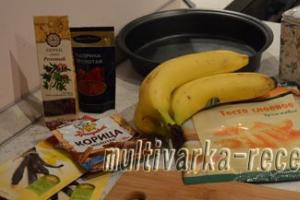For laying wood concrete blocks, it is recommended to use perlite mortar or sawdust concrete mixture. Application cement-sand mortar requires moistening the material before starting work. If this is not done, the wood concrete absorbs water from the solution, which negatively affects the strength of the masonry.
Features of wall construction:
- The blocks are laid in a checkerboard pattern. Bonded masonry is more reliable and durable. To reduce the consumption of adhesive solution and improve the quality of masonry, you can use tongue-and-groove arbolite blocks.
- After laying three rows, you need to take a break for a day. After the solution has dried, work can continue. The use of additives that increases the rate of strength gain allows you to increase the speed of work.
- When building residential buildings from wood concrete, it is recommended to reinforce every fourth row of masonry. To do this, use a polymer mesh or steel reinforcement treated with enamel or other anti-corrosion compounds.
1.4. Roof
It is recommended to use lightweight materials for roof construction. Both the frame and the roof covering. The best option there will be a device for a residential building made of wood concrete gable roof. This design perfectly performs its functions, does not interfere with the melting of snow and allows the weight of the roofing system to be distributed as evenly as possible over the load-bearing walls of the building.
In addition to double-slope roofs, common types of roofing systems include:
- Hip hip roof. Its design consists of two trapezoidal and two triangular slopes. Such roofing systems are very popular due to their reliability and excellent external characteristics.
- Hip roof. Four slopes, having a triangular shape, are connected at the top point. Correctly performed installation and successful selection of materials guarantee an attractive appearance and durability of the roof.
- Mansard roof. The upper slopes will have a gentle slope, and the lower slopes will have a steep slope. broken roof allows you to create additional useful space under the roof.
- Roofs of dome and conical type. Vaulted roofs decorated with turrets serve more of an aesthetic function. Such designs look very nice on buildings. large sizes with level differences.
Today, a person who is planning to build his own house needs to do a lot Difficult choice. The fact is that the vast variety of the most modern and already well-known building materials can put a non-specialist in a hopeless situation. Even highly professional builders now and then have discussions among themselves on the issue of choosing the key building material for constructing the walls of a building.
In this article we will talk about another building material called wood concrete (wood concrete). We will not exhort the mandatory use of this building material during the construction process. construction work, let’s simply talk about its inherent advantages and typical disadvantages.

Advantages and disadvantages
Due to its structure and characteristics, arbolite (wood concrete) is endowed with both positive qualities, and some flaws.

Positive properties enable wood concrete blocks to compete with classical building materials, but disadvantages make their use unacceptable in specific situations (multi-story construction, high humidity).
In general, there cannot be a building material consisting of only advantages, otherwise it would be used everywhere, and the rest would be undeservedly forgotten. The advantages of wood concrete as a building material are obvious.
Thus, a block made of wood concrete has many advantages.
- Thermal conductivity wood concrete is approximately the same as the coefficient for light cellular (porous) concrete and makes it possible not to produce additional insulation. However, such similarity can also be a disadvantage, since in some areas the material presented is more expensive in comparison with the named concretes.

- When following the wood-concrete manufacturing technology the block is environmentally friendly, which is especially important for people who are concerned about the environmental friendliness of building materials and the state of the environmental situation.


- Material has good sound absorption, which provides maximum protection for all inhabitants of the house from extraneous noise from the street and adjacent rooms.

- On to the positives can be attributed to the high vapor permeability, which allows the walls to “breathe”, but the advantage immediately becomes a disadvantage as soon as the conversation turns to areas with a consistently high saturation of the atmosphere with moisture and cool climatic conditions. Everything is explained by the fact that in the presented version the thermal efficiency of the building material can change sharply for the worse.

- Due to low volumetric weight light blocks, and when working with them, the use of an order of magnitude less physical effort is required compared to denser building materials, and the need for lifting equipment is significantly reduced.


- Dimensions arbolite block makes it possible to build structures with significantly higher speed than when using the same brick.


- With wood concrete very easy to work, it can be sawed without any problems with any sawing tool. In addition, you can drive nails and screws into it.

- Due to the structure of the material and its very high bending strength, there is no need to reinforce walls or install reinforced belts, which further reduces resource consumption and operating time. There is a similar positive point exclusively in low-rise construction.

- Wood concrete block non-flammable Therefore, there is no need to worry about its fire resistance.

The disadvantages of wood concrete blocks include some nuances.
- The manufacturer's ability to profit from the cement used in the production of blocks. In this case, the building material sharply loses its strength, thus, this minus eliminates some of the previously presented advantages.
- Similarly, a disadvantage that can nullify a number of advantages is the permissibility of changes by the manufacturer in the fraction of wood particles in the structure. It follows from this that it is likely that products will be produced with too large a fraction of wood chips or, on the contrary, the main share of the wood component may be sawdust. Both options have a great influence on the quality characteristics of the finished block and, consequently, the structure built from it.
- Wood concrete, due to the wood in its structure, is capable of absorbing water in significant volumes, which is why close attention must be paid to protecting wood concrete structures from water penetration.
- Another drawback is the frequent errors in the geometry of wood-concrete blocks; they, as a rule, are not very strong, but can lead to consumption beyond the masonry measure. cement mortar. And it increases the thermal conductivity of the rebuilt wall, which is also difficult to call an advantage.

Having analyzed all the advantages and disadvantages of wood-concrete blocks, we can draw the appropriate conclusions.
Wood concrete is an environmentally friendly material from which it is possible to construct energy-efficient efficient house very quickly and thoroughly.
Building materials should be used with caution for buildings with a high level of air humidity inside.
Before purchasing, it is imperative to check the material and make sure of its quality characteristics. It is necessary to evaluate the size and interweaving of wood particles located in the structure, to check the absence of excessive formation of hardened cement mortar or components of products that are not tightly coupled with each other.
Design
In the process of creating a project, the composition and characteristics of the soil are determined in order to calculate the characteristics of the foundation in accordance with this information. Then the shape of the house, the thickness of the walls, the presence or absence of thermal insulation, the placement of windows and doors, as well as other necessary characteristics are established. In addition, during the process of creating a project, the quantity and type of building materials are determined.
For example, on the outskirts of the city of Sochi, a wall thickness of 20 centimeters makes it possible to do without thermal insulation, while in the Omsk area the smallest wall thickness, which allows one to do without the use of thermal insulation, is 50 centimeters.

A competently created project will save you from unnecessary consumption of materials and the possibility of rebuilding some areas or details during the construction of the house.
Note: all standard house designs ranging from 100 m² up to 150 sq. m are adapted to the area of construction work (soils and local climatic conditions of the area).
Projects of houses made of wood concrete with an area of 100 to 150 square meters. m can be one-story or two-story and have in its structure an attic, a garage and even a basement or ground floor.

Construction technology
A house can be built in two ways.
- Construction made of wood-concrete blocks. In this situation, industrially created ones are already used. ready-made blocks from wood concrete. Often a decision is made to make wood concrete with your own hands. Before starting work, you need to make sure that the blocks have achieved the required quality for the job.
- Monolithic construction from wood concrete. The application of this practice involves the creation of permanent formwork with further pouring of wood concrete solution into it. To build a house from monolithic wood concrete, you need to study the method of organizing monolithic walls. Other phases will be similar to block construction.


Preparing the mixture
The manufacture of wood concrete has its own tricks, without knowing which you cannot obtain the proper quality. Actually, this is basically the reason for the suspicious attitude of individual builders towards this material.
At first glance, everything is clear - mix sawdust with cement and water. Only it soon becomes clear that what was received does not want to harden, and when it does harden, it peels off and cracks. Therefore, it is concluded that all the talk about the advantages of wood concrete is not worth the spent sawdust.
In reality, everything is not so primitive. Tree cells contain different types sugars (hemicellulose, glucose, sucrose and others). The above are water-soluble elements that negatively affect cement component material. They delay and sometimes completely interrupt hardening and have a detrimental effect on the composition of the cement.

Luckily for us, it is possible to fight this.
Much it is easier to let the wood raw material rest on outdoors two years. During this period, all compounds undesirable for cement are washed out, converted into substances that cannot be dissolved, or disintegrate.
But since such a long process is not possible every time, various ingredients are mixed into wood concrete to block sugars. Of these, for the production of wood concrete with your own hands, a combination of slaked lime with liquid glass or calcium chloride and aluminum sulfate (aluminum sulfate).
The first method is more economical. In addition, some experts believe it to be the most faithful and less demanding of the quality of the source material. The second seduces with the significant acceleration of the hardening of the solution.

Foundation
Due to their insignificant mass, arbolite walls exert significantly less pressure on the soil than brick, concrete or stone structures; therefore, for such houses, screw piles, shallow strip foundations, or combined foundations are used. This makes it possible to significantly reduce the price and labor costs of work when compared with the construction of a foundation for concrete or brick houses.
When laying the foundation, close attention must be paid to protecting the building from water and thermal insulation, since winter time an insulated base has a significantly less impact on the temperature of the floors. To insulate from moisture, roofing felt or roofing felt is used, and foam is used for thermal insulation.
If you plan to create an insulated or warm floor, then there is no need to insulate the foundation.

Walling
Due to the fact that cement is used as a binding element when creating wood-concrete blocks, various cement-based mixtures are used for laying wood-concrete blocks. You can use either a classic mortar in a ratio of cement and sand of 1:3, or any glue or masonry compositions that are intended for blocks based on cement. Wood-concrete blocks can be sawed without much effort hand saw ,as well as an electric or chainsaw, in this regard, installation on site does not cause problems.
As with the construction of houses made of building stone, every 3rd or 4th row is fixed using reinforcement laid over all arboblocks under a layer of masonry mixture or glue.
Due to the good strength of wood-concrete blocks, installation of windows and door leaves does not cause problems - they are fixed using anchor bolts.
The construction of walls starts from the corners, using a level, a plumb line and a cord that is pulled between the last blocks, this makes it possible to lay other blocks along an exact line. In this regard, the laying of arboblocks does not differ at all from the laying of brick, cinder block, foam block or gas silicate blocks. The masonry mixture must have the correct consistency so that the wood-concrete block displaces excess mortar with its own weight. The construction of walls must be carried out at an air temperature of more than +10°C. Wood-concrete blocks do not need to be wetted or soaked before laying.
Often, manufacturing companies deliver wet wood-concrete blocks to the client that have not accumulated the required strength characteristics. Walls should not be built from such blocks, since the lower rows will be crushed by the upper ones, and the configuration of the wall will be upset. If wet blocks have been delivered, they must be laid aside and allowed to rest for 15-20 days, after which they are absolutely ready for installation.


In parallel with block masonry, two methods of pouring are practiced load-bearing walls made from wood concrete with your own hands.
1. Pressed technology for pouring wood concrete, without frame
A string is stretched along the length of the axis of the base of the house. Using it as a guide, formwork panels are installed.
The solution is mixed, poured into permanent formwork layers of 20 centimeters each and compacted, the solution is added until the formwork box is filled to the very top. The stuffing is covered with cellophane film and left to harden.
The next day, it is checked how well the solution has gained strength, the formwork is dismantled, installed in another place or raised to the next row. The formwork is again filled with the mixture, and the solution is compacted. This continues until the wall is ready.

2. Frame method of pouring wood concrete
The frame of the future walls is made from a 50x60 or 50x70 mm block, the frame posts are aligned along the cord to form the external and internal planes of the walls.
After this, the resulting frame is filled with wood concrete in the same way as the first option, moving the formwork along the frame bars.
This poured method is more expensive, but provides the highest accuracy, and is more convenient, since it is not necessary to control every time how the formwork is positioned correctly. We simply move the formwork along the vertical bars of the frame, as if along guides.

Note: if you don’t want to tinker with this yourself, a ready-made house kit made from wood concrete panels is available for sale.
Insulation
Ways to build walls individual house There are now a lot of wood-concrete ones. In warm regions, a wall made of wood concrete can be built 30 centimeters thick without additional thermal insulation. In cold regions, an outer wall of 30, and sometimes even 40 cm, will not be effective enough to conserve heat. In order to prevent the structure from freezing, and to protect the housing from possible heat loss, it needs to be covered from the street with a layer of thermal insulation.
Thermal insulation of walls made of wood concrete with polystyrene foam
Polystyrene foam must be used exclusively for thermal insulation of a wood concrete house from the outside. In this case, it will be necessary to improve the ventilation system for air masses in the house, since the use of foam plastic will lead to a decrease in the vapor permeability of the walls. The plates are fixed to the facade using glue and, in addition, they are fastened with disc-shaped dowels; the gaps between the plates must be well foamed to eliminate temperature bridges.

Thermal insulation of wood-concrete walls with mineral wool
Manufacturers stone wool It is recommended to use a layer of insulation of at least 10 centimeters for thermal insulation of the facade. It's better to lay slabs mineral wool in two layers to eliminate cold bridges in the structure.
In order not to miss the selection of the thickness of thermal insulation, use the insulation calculator and do not forget to cover the fiber insulation with a vapor barrier film.

Thermal insulation of wood concrete with sawdust and cellulose insulation (ecowool)
The presented materials are natural insulation materials consisting of cellulose. Sawdust and ecowool are filled in during the construction of walls between load-bearing wall and finishing brickwork. Expanded clay, polyurethane foam or polystyrene foam boards can be used as thermal insulation inside the walls.

Roof
Mounting on wood concrete walls is allowed rafter system any design. The mauerlat can be made from a 15x15 centimeter block, rafters from a 50x200 mm board, racks from a 150x200 mm block, and a bed from a 200x200 mm block. The choice of roofing materials is also not regulated.
Experts recommend using bitumen (soft, flexible) shingles to implement roofing works. They explain their own choice by saying that flexible tiles is able to withstand slight swaying of wood-concrete walls without causing significant defects.
A fundamental aspect when constructing a roof will be to follow the rule - moving the roof 300-500 millimeters from the wall, which will make it possible to protect it from direct penetration of thawed and rainwater.

Finishing
The shrinkage of a wood concrete structure is only 0.4%. This makes it possible to begin facing work immediately after completion of construction.
Due to the strong moisture absorption of wood concrete (from 40 to 80%), the walls must be protected from high humidity. This is also required by the unattractive appearance of wood-concrete walls.
For external cladding walls, it is possible to use any building material: siding, lining, brick and so on. In most cases plaster is applied. If you are plastering, then when choosing, you must not forget that the vapor permeability of the material used must be similar to wood concrete. To cover it with clapboard or siding, you need to thoroughly waterproof and ventilate the wall.
Note: appeared on the construction market the new kind material – wood concrete with decorative finishing. It makes it possible to do without lining the walls of the house with wood concrete from the outside.

A house made of wood concrete does not need internal lining walls The most important condition so that the humidity level in the house used is not higher than 75%. In another case, in particular for a bathhouse, it is necessary to take into account additional vapor barrier of the walls.
Building a house is a very important step, since everything must be done efficiently and reliably, because future construction should serve for many years. It is important to think through the details and first of all decide what material the home will be made of. The first to come to mind are popular materials such as brick or wood, but one more option should be noted that will give both of them a head start - this is wood concrete. The material has a lot of advantages, and this article will talk about this in more detail. In order to save money, many build a house from wood concrete with their own hands, and in this case it is necessary to follow the recommendations of specialists.
What is wood concrete
This may be the first time some of you are learning about the existence of such a building material. But today more and more buildings are made from it. And this should not be surprising, because it has many positive aspects.
Arbolite is a type of lightweight concrete. It has a coarse-grained structure, and 80% of the entire base is wood chips. The composition of wood concrete includes three main components:
- organic filler (chips, sawdust, shavings);
- Portland cement;
- modifying additives.
Modifying additives in the composition improve specifications wood concrete. Thanks to them, the material can have the following properties:
- improved bactericidal qualities;
- acceleration of the setting process;
- regulation of wood concrete porosity.

You can purchase the material in specialized stores. It is sold both in blocks and as monolithic panels. It is noteworthy that in order to save money, wood concrete can be made independently, for example, in garage conditions. All you need is to prepare all the components.
Advantages and disadvantages

By making wood concrete, you actually recycle waste from wood processing organizations. Due to its composition, wood concrete is a fairly light material, so the future construction will not be very heavy. Besides:
- The complexity of the entire process of laying walls will be reduced.
- The costs of using special equipment will be reduced.
- Installation work will be easy to complete.
- It is not necessary to make the foundation strong.
A wall made of wood concrete is less subject to deformation processes during shrinkage of the house. Thanks to this, you don’t have to worry about cracks and other damage appearing later.

It should be noted that wood concrete has a lot of positive qualities:
- Low thermal conductivity, due to which the material holds well warm air indoors and prevents the penetration of both cold air in winter and warm air in summer.
- Increased frost resistance, which makes it possible to build buildings in regions with harsh climates.
- Fire resistance, thanks to which the material will not burn, despite the wood content in the composition.
- Good adhesion. This property helps to combine wood concrete with any building materials, which adhere perfectly to its surface.
- Strength and durability. This indicator is one of the main ones, since during the construction of any building everyone wants to achieve exactly this goal. Wood concrete blocks are quite durable, so you can easily build a house of 2-3 floors. By the way, wood concrete will not rot and fungi and various microorganisms will not appear in it.
- Porous structure providing excellent sound insulation.
- Light weight.
- Absolutely environmentally friendly.
- Small price.
The material also has its own small disadvantage - low moisture resistance. Arbolite is hygroscopic and easily absorbs moisture from environment, therefore, during work it must be isolated from moisture.
Wood concrete does all this ideal option to build your home.

If you want to build a wood concrete house, you need to immediately decide how to do it - build it from blocks or pour a monolithic house from wood concrete . Next comes another choice - buy the material or make it yourself. If you have the means and decide to buy the blocks, just prepare a storage area for them under the shed. Self-production Wood concrete is also welcome, all you need is to prepare the material in advance.
The basis for wood concrete is wood chips, but they should not be too small - at least 4x5x0.5 cm. This is due to the fact that wood absorbs moisture very quickly. If the chips are small, when mixed with cement they will simply lose their properties.
The preparation of raw materials should take place in the following sequence:
- Purchased waste from the sawmill should lie in the open air for 3-4 months.
- After this, they need to be treated with a limestone solution (2.5 kg per 150 liters of water).
- The wood chips must be stirred for 3 days.
- Wait until the limestone mortar dries.
Additives for wood-concrete mixtures can include:
- aluminum sulphide;
- slaked lime;
- calcium or aluminum chloride.
After all the steps, it’s time to start mixing the wood concrete mortar.
Preparing the mixture
To prepare 1 m 3 of wood concrete solution, you will need the following components:
- 300 kg of wood chips;
- 300 kg of Portland cement;
- 15–35 kg of chemical additives;
- 350–400 liters of water.
 Kneading is best done in a container with low sides; a large trough would be ideal. Otherwise, you can use a concrete mixer. To make wood concrete blocks, you will need molds. They can be made from wooden planks, covered with plywood or sheets of metal. To make a bottom for them, use linoleum. For the convenience of further work, make handles.
Kneading is best done in a container with low sides; a large trough would be ideal. Otherwise, you can use a concrete mixer. To make wood concrete blocks, you will need molds. They can be made from wooden planks, covered with plywood or sheets of metal. To make a bottom for them, use linoleum. For the convenience of further work, make handles.
The molds must be moistened with water or lime before pouring. And the bottom, which is made of linoleum, will need to be changed periodically, as it will wear out.
Now you can mix the solution. For this:
- Pour sawdust and additive into a trough or concrete mixer.
- Cover everything with water and mix well. If you are doing this by hand, use a garden hoe rather than a shovel to mix.
- Then add Portland cement and water.
- After which everything needs to be thoroughly mixed again.
- Treat the made forms with lime.
- Pour the mixture into the molds and compact it well.
There is no need to pour the solution flush into the mold. Leave 2-3 cm of space from the edge of the pan. The top of the wood concrete should be covered with a plaster mixture and leveled using a spatula. The block should be kept in the mold for 24 hours so that it sets and becomes stronger. The next day, the blocks need to be removed and placed under a canopy. There they will wait in the wings for 2-3 weeks, only after which they can be used for construction work.
If you plan to make the walls monolithic, gradually filling them, mixing the mortar should occur immediately after the foundation is made and everything is ready for pouring the walls. The technology for mixing the solution is the same.
So, the material for building a house has been prepared, next we will look at how to build a house. If you already have a house plan and drawings, then the first thing you need to do is make a foundation - the basis for the future house.
Foundation arrangement

The main advantage when working with wood concrete is its low weight. Therefore, the foundation for your building can be anything:
- pile foundation;
- strip shallow foundation;
- slab foundation;
- columnar foundation.
The important fact is that even if the building sags (which cannot be avoided), the walls of your house will not crack. This is possible due to the unique properties of wood concrete wall blocks: they have high fracture strength. Thanks to this, you can choose any type of foundation in order to save money and ease the arrangement. Most often, preference is given to bored piles and strip shallow foundations.

Briefly about how to make a strip foundation:
- Prepare the foundation, mark the site according to the house plan.
- Dig a trench under the foundation.
- Compact the bottom by making a 5 cm high cushion of crushed stone or sand and compacting it.
- If desired, install reinforced mesh.
- Then make the formwork. Make sure that no gaps are formed.
- Now you can pour the concrete, compact it and expel the air.
- Everything is leveled with a trowel and left until completely dry, which will take 1 month.

Since the wood concrete from which the walls will be built has low moisture resistance, the foundation necessarily needs waterproofing. Firstly, the base must be raised 40–50 cm above ground level or a half-meter brick base must be made. Secondly, the foundation must be lubricated with bitumen and 2-3 layers of waterproofing (for example, roofing felt) laid.
Briefly about how to make a bored pile foundation:
- Calculate the future foundation (depth, height above the soil, frequency of piles).
- Mark the area based on calculations.
- Make holes for the piles.
- Make formwork and make a cushion.
- Reinforce the future foundation.
- Install piles and carry out waterproofing work.
- Pour concrete into the wells.

When the selected foundation is ready, you can begin building the walls. If you have already done brickwork, it will be easy for you to work with wood concrete, since the principle of operation is the same. The order of work is as follows:
- Masonry starts from the corners. It is necessary to align the corner blocks perfectly evenly, since the evenness and quality of the future wall depends on this. For these purposes, use a building level.
- Then a cord or fishing line is stretched between the corners. It should run along the edge and be well stretched. The following blocks will be aligned using it.
- After this, the laying of the blocks occurs directly. They need to be adjusted to the level of the fishing line and the same seam should be made, no more than 1 cm.
- Having finished the first row, do the second in exactly the same way, only with the link you have chosen.
- If the blocks need to be adjusted to size, they can be cut with a stone saw.
To ensure reliable and high-quality masonry, you should consider some points:
- In order for a house made of wood concrete to exhibit its thermal properties 100%, the formation of cold bridges must not be allowed. They will contribute to large heat loss. To remove them, when laying, use the method of breaking the seam using a wooden plank. It should have a cross section of 12x12 mm.
- Since wood concrete strongly absorbs moisture, before installing the blocks they must be moistened with water. Otherwise, it will absorb water from the cement solution. Another option is to make a thinner solution.
- If it is necessary to build a house with a non-standard design, the blocks are processed immediately on site using a stone-cutting saw. If you don’t want to spend a lot of time, shaped blocks can be ordered from specialized companies, but this will cost more.
Monolithic walls

If you are planning to do monolithic walls, you need to make a solution before starting work. The technology is similar to conventional concreting. Formwork is installed on the foundation. Its height should be 60 cm maximum. It is important to ensure that it is sufficiently reliable and strong to withstand the load of heavy wood concrete, so it must be well connected and strengthened.
As reinforcement for the rigidity of the wall, you can use wooden frames, which are installed vertically in increments of 120–150 cm. Thanks to the frames, an expansion joint is created, which helps to distribute the load evenly. The boards must be treated with an antiseptic.
It is better to pour concrete in a layer of 50 cm and no more, so that the structure does not fall apart under the weight. Do not fill the solution to the brim. After that, everything is compacted tightly and waited for drying (usually 2-3 days). As soon as the solution has set, the formwork is dismantled and raised higher to pour the next layer of wood concrete. The formwork should be removed carefully. All work is carried out until the required building height is reached.
Finishing arbolite walls

Thanks to the rough surface, arbolite walls have good adhesion (adhesion to any surface). This means that you can plaster the walls right away, without additional preparation of the walls.
As an outdoor facing material you can use any material:
- siding;
- lining;
- brick;
- wood (block house);
- facade paint.
Inside, the walls of the house can be decorated with whatever your heart desires. There is only one rule - indoor humidity should not be more than 75%.

When the frame of the future building is made, you should take care of the roof over your head. the main task– correctly distribute the load throughout the structure. To solve it, you can resort to one of two options:
- Do concrete screed, which is reinforced over a layer of wood concrete.
- Install wooden beam on blocks (mauerlat).
The second option is most often used. The beams must be treated with an antiseptic and installed in increments of 60 cm. The cross-section of the beams is 10×20 cm. To make rafters, boards with a cross-section of 20×5 cm are used. The rafters are covered with waterproofing material.

The ridge is made of timber measuring 5x5 cm. It must be attached to the rafters. For the sheathing, take a 15x3.5 cm board and fasten it in increments of 25–30 cm. All that remains is to lay roofing material. It can be slate, metal tiles or corrugated sheets.

So, it’s quite possible to make your own home from wood concrete. Moreover, such a house will be warm and durable.
Video
Photo






Once upon a time there lived a kind and magical man. Old and wise, everything is as it should be. As a proper wizard, he always tried to help all those who work honestly and hard.
Having seen enough of hard labour builders, that it is difficult for them to constantly carry small bricks from top to bottom, calculated how many of them are needed to grow a house even of two or three floors. He calculated the weight, multiplied it by the height of the building, estimated the width and grabbed his head.
- Oh oh oh. This is how much these stones need to be dragged and moved, how much mortar needs to be made and laid between the bricks. This is very a lot of work. It is not appropriate at a time when ships are already flying into space, robots are running on the ground, to place such a burden on the shoulders of people.
Wood concrete house projects: magic brick
Difficult magical days have begun. A day has passed, two. The wizard neither leaves his house nor shows himself. No one knows how long it took until the happy wizard jumped out of his unusual hut. He scratched the back of his head, whispered some strange, probably magical words, and gathered all the builders for a real magical council.
He pulled out a large vat. poured the most best cement. I added all sorts of little wooden things. He poured in the water. As befits a real wizard, he pulled out a hair from his long beard. Turned it into some kind of magic powder. I poured it into a large vat. He whispered strange magic words again. It began to bubble and swirl. Everything was mixed up. It turned into foam. And real bricks started coming out of the vat. Beautiful. Light, almost like down. Big as a beach ball. Durable, solid. Real magic bricks for a good home. Just like that, new housing construction has recently begun based on wood concrete house designs. Beautiful, wonderful, light in weight, fast in speed of construction. Real houses made according to a magical recipe.
If you decide to build a house from wood concrete blocks, you need to know all its advantages and disadvantages. This will help you avoid serious problems in the future. Everyone has their own priorities for future housing, so it is important to receive information in a timely manner.
Advantages:
- Since these blocks have low thermal conductivity, this makes it possible to make the walls thin.
- They are considered natural raw materials, so they do not emit any harmful substances.
- Good sound insulation.
- Not a lot of weight allows you to save money on the foundation, since the load on it will not be significant.
- The construction speed is high due to the size of the blocks.
Flaws:
- Arbolite blocks absorb moisture well and that is why it is important to waterproof the first row of masonry.
- Bad geometry. Construction requires more mortar, and thermal insulation deteriorates.
Bottom line! From of this material you can build an environmentally friendly house.
What is a ready-made project made from arbolite blocks?
You can choose it from our catalog. We have a very large selection, so you will like something in any case. This will save time and money. You will be able to begin construction soon.
What is an individual project
We create an individual project according to the customer’s requests and requirements. Although it takes much more time, all your ideas will be realized as a result. You will receive a unique home.
If you want to build a house, then you will not regret contacting our company. We employ professionals. You will not need to look for help from other companies, as we have everything you need. Our prices will pleasantly please you, you can be sure of that. You will get everything necessary information early. As a result, you will get the home of your dreams. We will do everything necessary for this.








